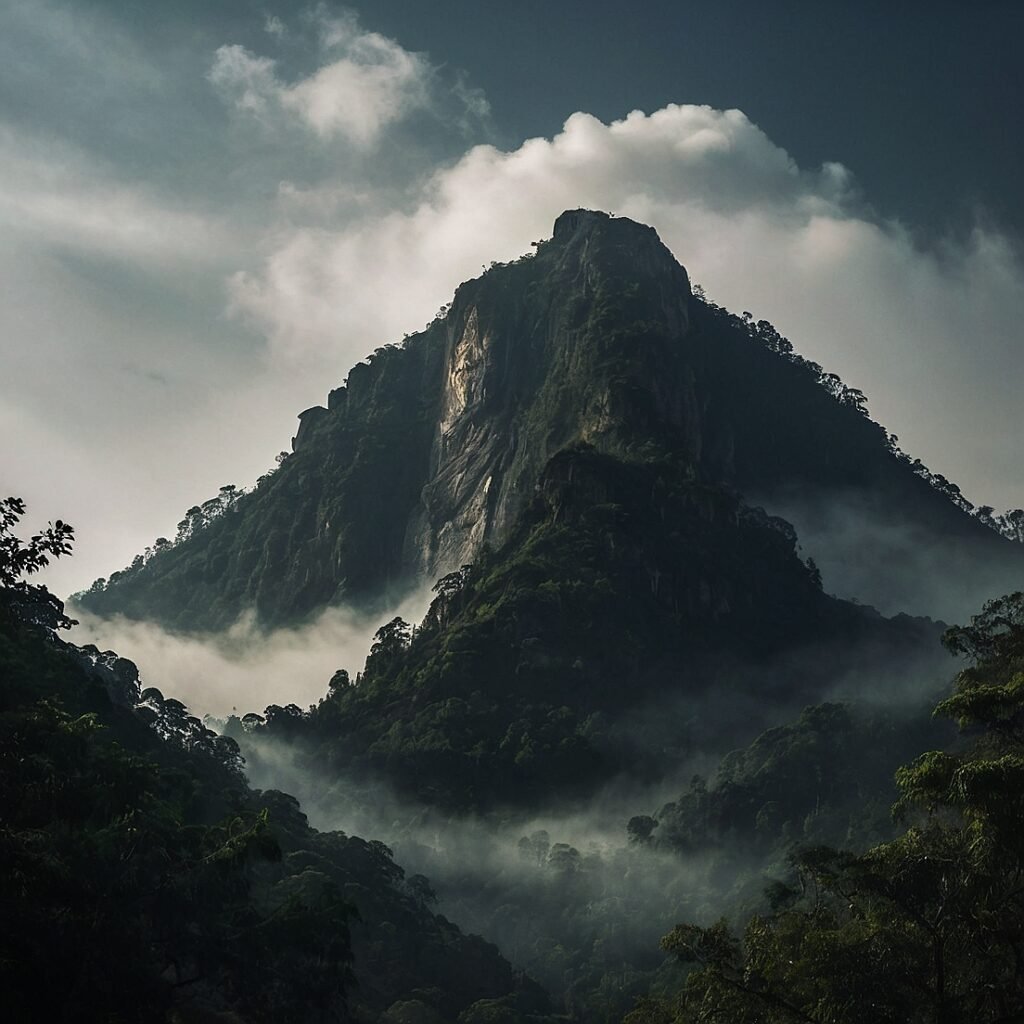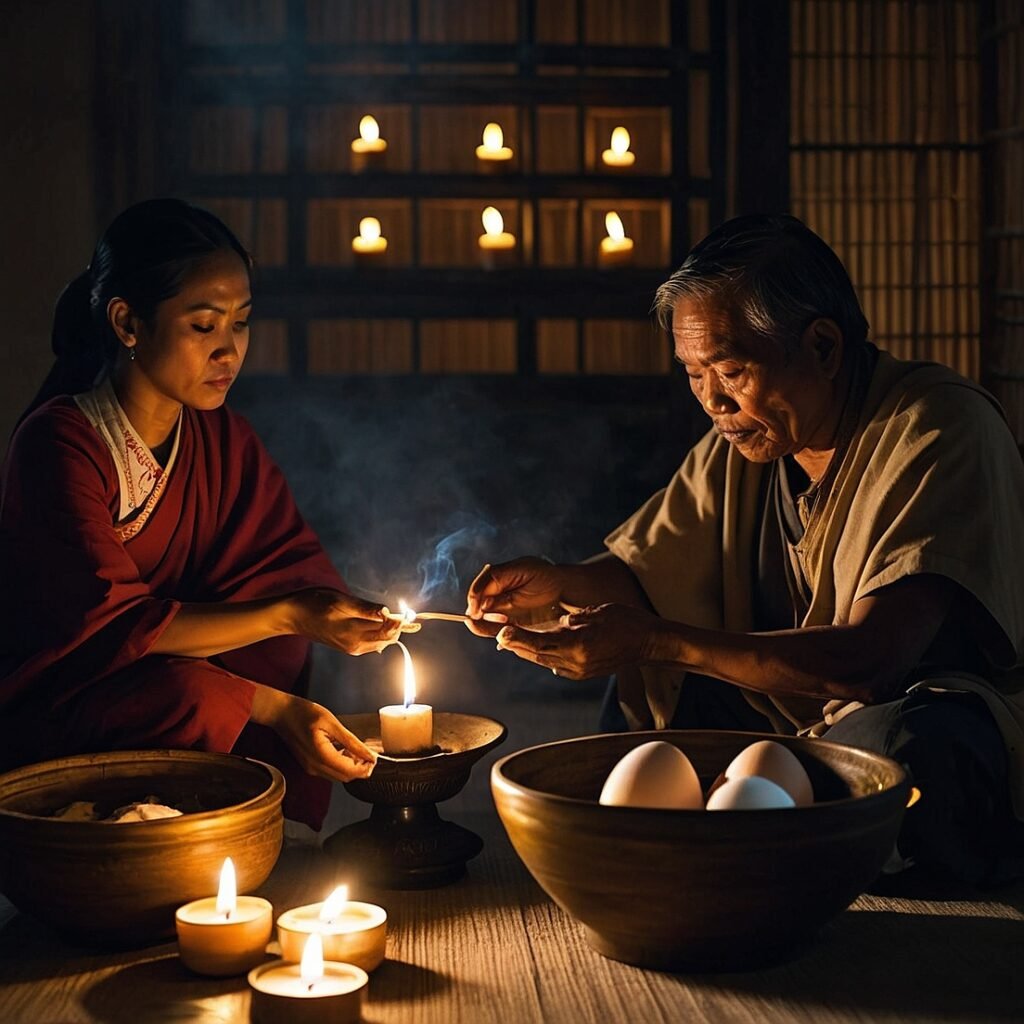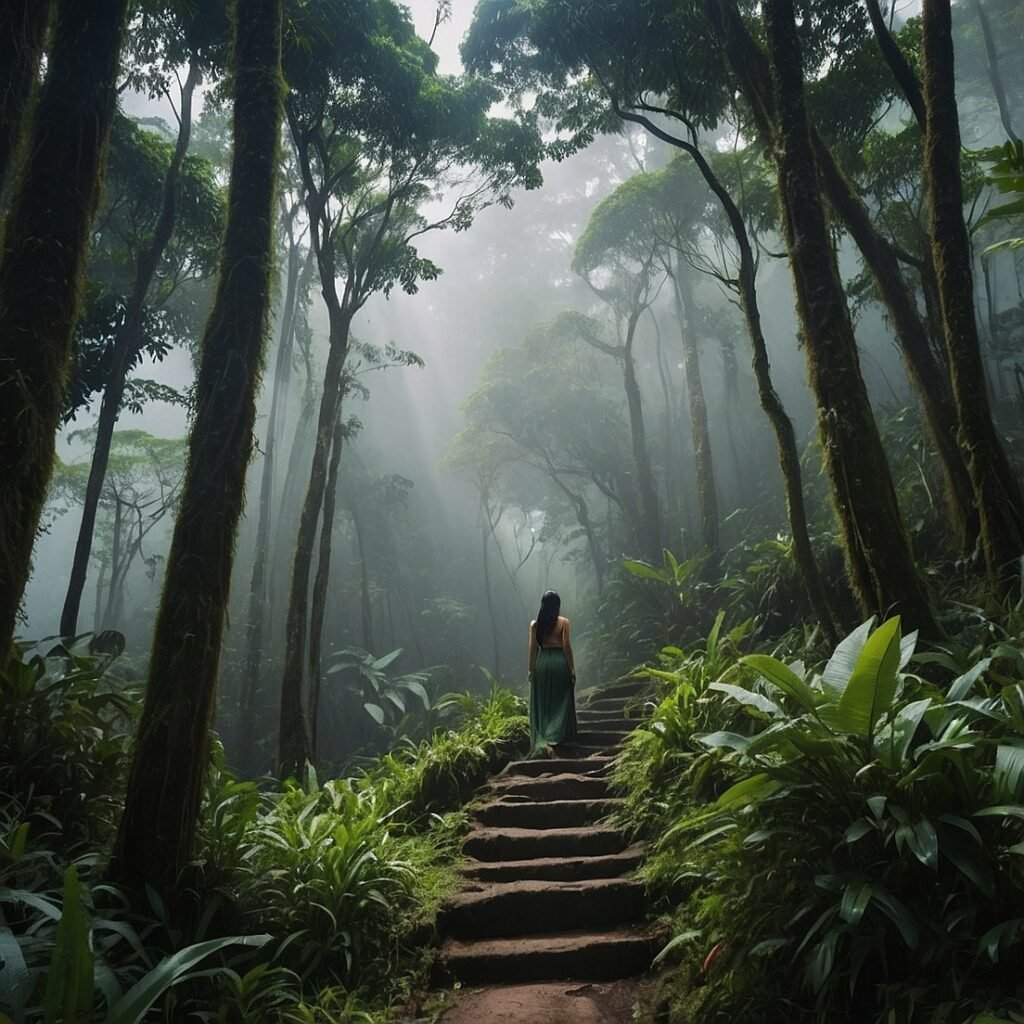Have you ever felt a shiver down your spine while hiking through a dense, misty forest? Imagine stepping into a realm where reality blends seamlessly with folklore, where every rustling leaf and creaking branch might be more than just the wind. Welcome to Mt. Cristobal, a place where nature’s beauty intertwines with the mysterious world of Philippine mythology.
Nestled in the heart of Laguna and Quezon provinces, Mt. Cristobal stands as a silent sentinel, guarding ancient secrets and whispering tales of supernatural encounters to those brave enough to listen. Known locally as the “Devil’s Mountain,” this enigmatic peak has captured the imagination of hikers, thrill-seekers, and folklore enthusiasts for generations. But what makes this mountain so special? Why does it continue to fascinate and frighten in equal measure? Join me on a journey as we unravel the mysteries of Mt. Cristobal and explore the legends that have made it a cornerstone of Philippine folklore.
The Legend of Mt. Cristobal
A Mountain Shrouded in Mystery
Mt. Cristobal isn’t just any mountain. Standing at 1,470 meters above sea level, it’s part of the Mt. Banahaw-San Cristobal Protected Landscape, a place revered for its spiritual significance and biodiversity. But it’s not the height or the flora that sets Mt. Cristobal apart – it’s the stories that cling to its slopes like the ever-present mist. For as long as anyone can remember, Mt. Cristobal has been associated with supernatural beings, chief among them the legendary ‘Kapre.’
The Kapre: Guardian of the Forest
In Philippine folklore, the Kapre is a fascinating creature. Imagine a giant, dark-skinned being, often described as tree-like in appearance, with glowing red eyes and a penchant for smoking large cigars. These mythical creatures are said to dwell in ancient, massive trees, acting as guardians of the forest. They’re known for their mischievous nature, often playing tricks on unsuspecting travelers, but they’re not inherently malevolent. In fact, some stories portray Kapres as gentle giants, fiercely protective of their forest homes.
On Mt. Cristobal, the legend of the Kapre takes on a special significance. Many hikers and locals claim to have encountered these beings, describing eerie experiences of feeling watched, smelling the distinct aroma of tobacco where no one is smoking, or even catching glimpses of large, shadowy figures moving through the trees. These encounters have contributed to Mt. Cristobal’s reputation as a hotbed of supernatural activity, earning it the moniker “Devil’s Mountain.”
The Allure of Mt. Cristobal
A Hiker’s Paradise with a Twist
Despite its ominous reputation – or perhaps because of it – Mt. Cristobal has become a popular destination for hikers and adventure seekers. The mountain offers a challenging yet rewarding climb, with diverse terrain that ranges from lush forests to rocky outcrops. As you ascend, the air grows cooler, and the mist often rolls in, creating an atmosphere that’s both beautiful and slightly eerie. It’s easy to see why this environment has sparked so many tales of supernatural encounters.
Biodiversity and Natural Beauty
Mt. Cristobal isn’t just about legends and ghost stories. It’s also a testament to the incredible biodiversity of the Philippines. The mountain is home to a wide variety of plant and animal species, many of which are endemic to the region. From colorful birds flitting through the canopy to rare orchids clinging to ancient trees, the mountain is a living museum of Philippine flora and fauna. This rich ecosystem adds another layer to the mountain’s mystique, reminding us of the deep connection between nature and folklore in Philippine culture.
Climbing Mt. Cristobal: A Personal Journey
Preparation and Anticipation
When I decided to climb Mt. Cristobal, I was filled with a mix of excitement and trepidation. I’d heard the stories, of course – who hasn’t? But I was determined to experience the mountain for myself. Preparation was key. I packed the usual hiking gear: sturdy boots, plenty of water, trail mix, and a first-aid kit. But I also found myself slipping in a small amulet, a gift from my grandmother who swore it would protect me from any mischievous spirits. Was I being superstitious? Perhaps. But on Mt. Cristobal, it seemed better to be safe than sorry.
The Ascent: Into the Realm of Legends
The climb began early in the morning, with mist still clinging to the lower slopes. As we ascended, the forest seemed to come alive around us. Birds called from unseen perches, and the undergrowth rustled with the movement of small animals. Our guide, a local man named Juan, pointed out various plants and their traditional uses, his knowledge a testament to the deep connection between the mountain and the communities that have lived in its shadow for generations.
As we climbed higher, the forest grew denser, and the air took on a cooler, damper quality. It was in these upper reaches that Juan began to share stories of encounters with the Kapre. He spoke of hikers who had become disoriented, walking in circles for hours despite following clear trails. He told us about the strange lights sometimes seen flickering between the trees at night, and the inexplicable sounds that echoed through the forest when no one else was around.
A Moment of Mystery
It was nearing midday when we reached a small clearing. Juan suggested we take a break, and as we sat catching our breath, I noticed something strange. Despite the physical exertion of the climb, I suddenly felt a chill that seemed to come from within. The forest had gone eerily quiet, the usual chorus of bird calls and insect chirps suddenly absent. And then, from the corner of my eye, I caught a glimpse of movement – something large shifting behind a distant tree. When I turned to look directly, there was nothing there, but the faint scent of tobacco lingered in the air.
Was it my imagination, fueled by Juan’s stories and the mountain’s reputation? Or had I experienced a genuine brush with the supernatural? On Mt. Cristobal, the line between reality and folklore seems to blur, leaving each climber to draw their own conclusions.
The Cultural Significance of Mt. Cristobal
A Sacred Space
Mt. Cristobal, along with its twin peak Mt. Banahaw, holds a special place in Philippine culture. For many, these mountains are more than just geographical features – they’re sacred spaces, imbued with spiritual energy. Some religious groups consider the area to be holy ground, conducting pilgrimages and rituals on the mountain’s slopes. This spiritual significance adds another layer to the mountain’s mystique, blending Christian beliefs with pre-colonial animistic traditions.
Folklore as Cultural Heritage
The legends surrounding Mt. Cristobal, including the tales of the Kapre, are more than just entertaining stories. They represent an important aspect of Philippine cultural heritage. These folkloric traditions reflect the Filipino people’s deep connection to the natural world and their respect for the unseen forces that were believed to inhabit it. In a rapidly modernizing world, these stories serve as a link to the past, preserving ancient wisdom and encouraging a sense of wonder and respect for nature.
The Environmental Challenges Facing Mt. Cristobal
Balancing Tourism and Conservation
The popularity of Mt. Cristobal as a hiking destination has brought both opportunities and challenges. On one hand, it has raised awareness about the mountain’s unique ecosystem and cultural significance. On the other, increased foot traffic poses potential risks to the fragile environment. Local authorities and conservation groups have been working to implement sustainable tourism practices, but it’s an ongoing challenge to balance accessibility with preservation.
Threats to Biodiversity
Like many natural areas in the Philippines, Mt. Cristobal faces threats from deforestation, climate change, and habitat loss. The mountain’s rich biodiversity is at risk, with some species facing the threat of extinction. Conservation efforts are underway, but they require ongoing support and resources. It’s a stark reminder that the real monsters threatening Mt. Cristobal may not be mythical beings, but the very real consequences of human activity.
The Future of Mt. Cristobal
Preserving Nature and Folklore
As we look to the future, the challenge will be to preserve both the natural beauty of Mt. Cristobal and the rich folklore that surrounds it. Conservation efforts must go hand in hand with cultural preservation, recognizing that the stories and legends are an integral part of what makes this mountain special. Educational programs that teach visitors about both the ecological importance of the mountain and its cultural significance could play a crucial role in ensuring its long-term protection.
Responsible Tourism
For those planning to visit Mt. Cristobal, responsible tourism is key. This means following Leave No Trace principles, respecting local customs and beliefs, and being mindful of the mountain’s delicate ecosystem. It also means approaching the folklore with an open mind and a sense of respect, recognizing that these stories are an important part of local culture, regardless of one’s personal beliefs.
The Facts Behind the Folklore
While the legends of Mt. Cristobal are fascinating, it’s also important to look at the mountain from a more factual perspective. Here’s a table presenting some key data about Mt. Cristobal:
| Aspect | Details |
|---|---|
| Location | Boundary of Laguna and Quezon provinces, Philippines |
| Height | 1,470 meters (4,823 feet) above sea level |
| Classification | Potentially active volcano |
| Last Known Eruption | No historical eruptions recorded |
| Protected Status | Part of the Mt. Banahaw-San Cristobal Protected Landscape |
| Biodiversity | Home to numerous endemic plant and animal species |
| Hiking Difficulty | Moderate to challenging |
| Best Time to Visit | December to May (dry season) |
| Nearby Attractions | Mt. Banahaw, Dolores Botellas Falls |
The Enduring Mystery of Mt. Cristobal
As we come to the end of our journey through the misty slopes of Mt. Cristobal, we’re left with more questions than answers – and perhaps that’s exactly as it should be. This mountain, with its blend of natural beauty, rich biodiversity, and captivating folklore, serves as a powerful reminder of the magic that still exists in our world. Whether you believe in the legends of the Kapre or not, there’s no denying the profound impact that Mt. Cristobal has on those who visit it.
From its challenging trails to its whispered legends, Mt. Cristobal offers something for everyone – the adventurer, the nature lover, and the seeker of mysteries. It stands as a testament to the Philippines’ rich cultural heritage and breathtaking natural landscapes. As we face the challenges of the modern world, places like Mt. Cristobal remind us of the importance of preserving both our natural environments and the stories that give them meaning.
So, dear reader, I encourage you to delve deeper into the world of Philippine folklore, to explore the stories that have shaped this nation’s cultural identity. And if you’re feeling adventurous, perhaps you’ll consider a trip to Mt. Cristobal yourself. Who knows? You might just have an encounter with a Kapre – or at the very least, with the enduring magic of the Philippine wilderness.
Disclaimer: This article is based on a combination of historical information, local legends, and personal experiences. While every effort has been made to ensure accuracy, some details may be subject to varying interpretations or may have changed since the time of writing. We encourage readers to conduct their own research and to approach the topic with an open and respectful mindset. If you notice any inaccuracies, please report them so we can correct them promptly.




